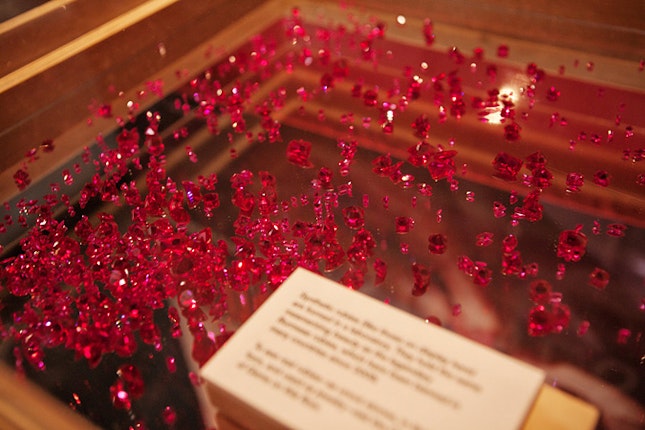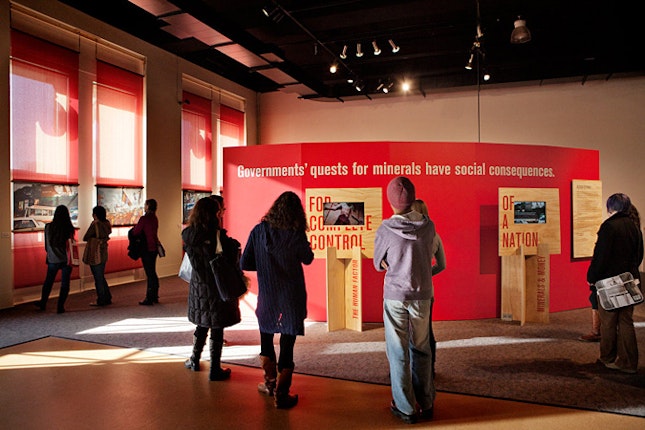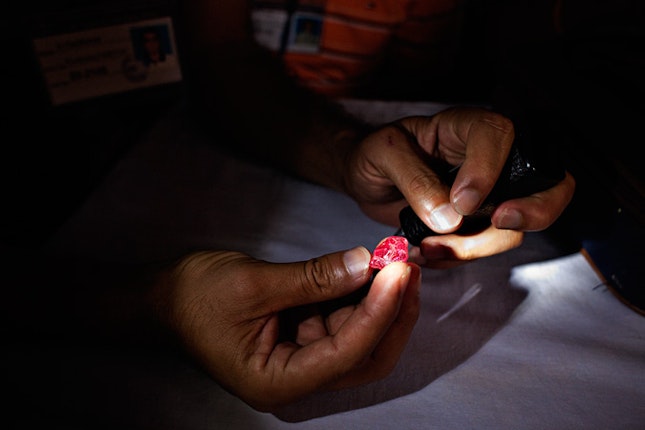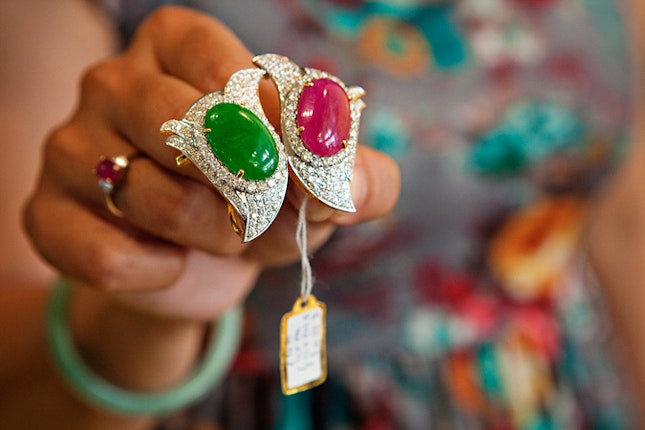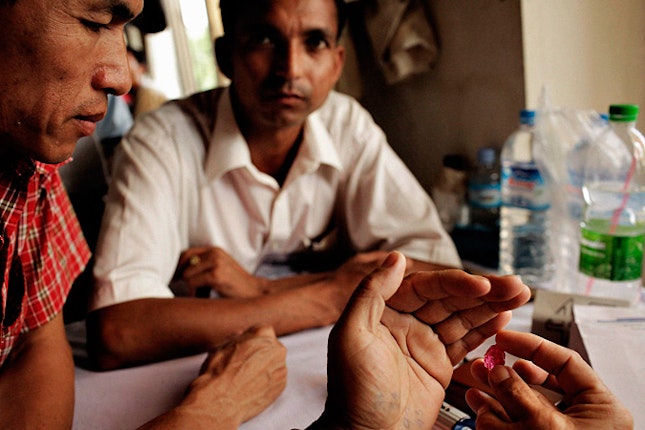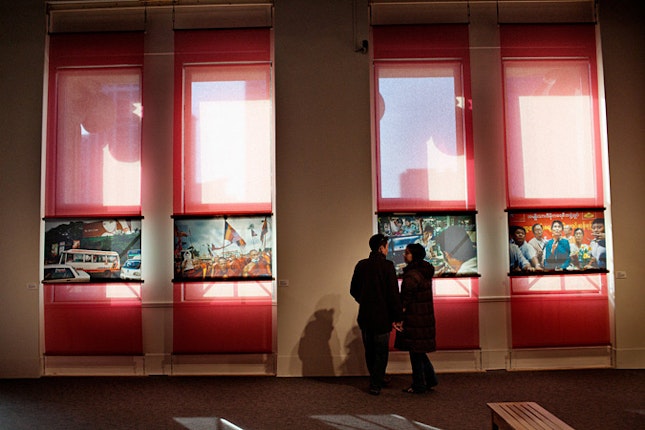The “Blood Rubies” of Burma
By Amy Yenkin & Heather Marciniec
BLOOD/STONES: Burmese Rubies explores the nexus between human rights and the global trade of Burmese rubies. The exhibition, supported by the Open Society Foundations, features images by photographer Christian Holst and was coordinated by Leslie Thomas of Art Works Projects, a grantee of the Documentary Photography Project. We talked with Thomas about the show, gems, human rights, and Burma.
Why did you launch the exhibition BLOOD/STONES?
Despite recent positive politcal changes, Burma has been tightly and abusively controlled for years and the people face enormous challenges. There is still no guaranteed freedom of movement, association, or speech. In conflict areas in Eastern Burma, villagers face forced labor, extrajudicial killings, sexual violence, and the burning of their villages.
Time and time again, we heard from advocacy and humanitarian groups that it was very difficult to keep the international spotlight on Burma. After talking with Human Rights Watch researchers, Art Works came up with the idea for BLOOD/STONES as a way to visually tell the story of human rights abuses in Burma.
Our work often targets wider, mainstream audiences and so an exhibition that would fit into public venues with high foot traffic made sense. The story of Burmese rubies—beautiful, storied, banned, and the source of great wealth not distributed to the country’s civilians – seemed like the right angle that could include a number of related issues.
We are particularly glad that we chose an economic angle. While there is movement towards democracy, wealth distribution will not necessarily follow political openness. As governments debate lifting sanctions and, specifically, lifting restrictions on the import of gemstones from Burma, we hope it is well understood that Burma’s incredible wealth lies in the hands of just a few.
Photographer Christian Holst, with his long experience in the region, was an incredible collaborator. We have spent the last two years working on this project. Christian will continue to take images and we hope to add them as we can. We are making plans to tour the exhibition through natural history museums, cultural and photography centers, political centers, and in partnership with public schools.
How does the trade of Burmese rubies and jade affect the lives of Burmese people?
In Burma, as in so many countries, my impression is that the extraordinary wealth found in the ground, in timber, and in vast rivers (from hydroelectric dams) has not benefited the people. Their lives are characterized by poverty, malnutrition, and lack of medical care and education.
The military junta carefully controlled development and sales of natural resources, ensuring that funds flow only to them and are not invested in the country. Burma is currently the poorest country in Southeast Asia. Ironically, as pointed out to us by a well-known gemologist, this lack of investment in the country has meant that mining techniques have not evolved to take full advantage of Burmese resources. Additionally, if the revenue from state-owned gem enterprises—currently siphoned away to hidden bank accounts—was recorded in Burma’s budgets, this money could fund the health and education needs of the country.
Ultimately, the most precious natural resource exploited by the Burmese military is its people. The contrast in Christian’s images of the sparkling rarities of Burmese gems and the resilient, patient, and isolated people of Burma tells that story in every frame.
What has the jewelry industry done to responsibly trade in Burmese gems?
Even before sanctions were enacted in the US, there was a movement to ban Burmese rubies that was largely supported by independent jewelers and by some of the very large, national companies like Tiffany’s. However, this may change as the political climate develops.
Already there is talk in Washington, D.C., and Brussels about the possible lifting of bans on investing in the gemstones sector. If this is done without ensuring labor protections and appropriate distribution of wealth then there will be no benefit to the Burmese people; we’ll be contributing to continued inequality rather than confronting it.
The global transparency and accountability movement are progressing in the right direction. If new European Union laws that are being debated in Brussels eventually lead to companies having to disclose what they pay to governments, similar to U.S. legislation, we might start to see global transparency mechanisms having impact on revenues available to local communities. That is one way to do it. Another complementary approach would be for companies, civil society, and the international community to develop a binding set of rules on corporate accountability that focuses on Burma.
The story of exiting dictators leaving with a full, off-shore bank account and a country forced to build a democracy with empty coffers is one we’ve heard many times. It would be very sad if that happens in Burma. I hope that the jewelers respect that concern. We’re asking them to—we will see how that goes.
How have visitors to the exhibit reacted?
People are attracted by the rubies—they are synthetic but quite beautiful—and stay to read the text and watch the videos. It sparks conversation. At the end of the day, the ruby case is usually smudged with fingerprints. A good sign that viewers are spending time.
We try very hard to parse information. But at the end of the day, we’re talking about tyranny, child labor, trafficking, and extreme gender violence.
With this exhibition we have a basic message that natural resource exploitation can have significant and negative effects including the abuse of workers and civilian populations who are not allowed to share in the income generated from their country’s own natural resources. Oil, diamonds, gold, and so many other resources are often at the center of these tragedies around the world.
We chose to focus the exhibit on Burmese rubies because of their long history and the especially famous pigeon’s blood stone, the brightest and most expensive rubies on the market. We wanted to show viewers that we are all linked, through our purchases, to a wide range of countries impacted either positively or negatively to the world’s found treasures and natural resources.
If the political situation improves in Burma, there will be new, international investment in these sectors. We hope this exhibit will encourage consumers to pressure investors to support corporate social responsibility, government accountability, and the legal reforms needed to protect the rights of all Burmese so that investment helps the country and does not fuel Burma’s current resource curse.
In future venues, we hope to project the video images onto large walls and to flood the front of venues in a red light reminding us of what happens behind closed doors.
How do you think photography can impact a global human rights issue? What are the benefits and limitations?
I believe that facts should be enough to motivate all of us to act—the number of children who die daily from malaria or lack of clean water, the tally of those in forced labor, that we live in an age when genocide is still an active fact of life—but it seems not to be the case. Maybe we just need more visceral information.
Personally, I will never forget the impact of photographer Eugene Smith’s pieta of Tomoko Uemura in her Bath and my absolute conviction that I would fight for environmental safety once I’d seen the reality of mercury poisoning in the body of a girl near my own age. When I look at Christian’s work documenting ethnic groups who are being persecuted, or Marcus Bleasdale’s portraits of labor abuses in Congolese gold mines, or Lynsey Addario’s portraits of teenage survivors of extreme sexual violence, or Dominic Nahr’s immersion into Somalia’s volatile landscape, they have a similar impact on me.
However, we cannot delude ourselves that any tool—verbal, visual, or otherwise—will make complete change. Kevin Carter took a photo of a starving toddler almost 20 years ago that should have shocked the world into ending famine once and for all. The horrific numbers of people dying in the Horn of Africa today seems to prove that we are still very much a work in progress as a society when it comes to human rights.
BLOOD/STONES: Burmese Rubies was co-funded by the Open Society Documentary Photography Project and Burma Project/Southeast Asia Initiative.
Until March 2016, Amy Yenkin was the director of the Open Society Documentary Photography Project.
Until January 2013, Heather Marcinec was a program officer with the Open Society Burma Project/Southeast Asia Initiative.
